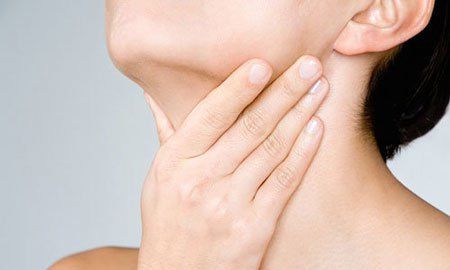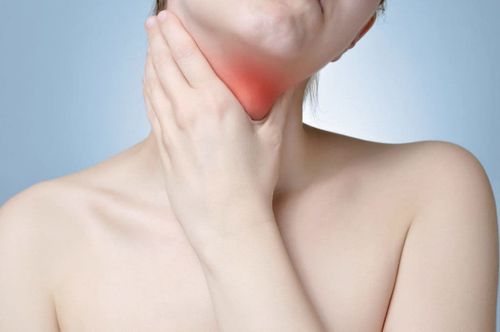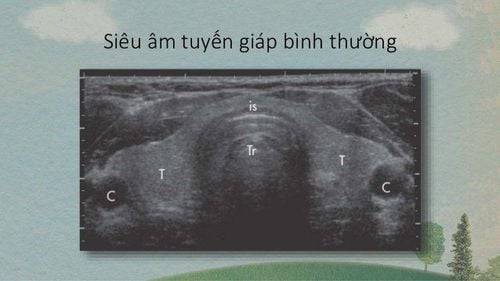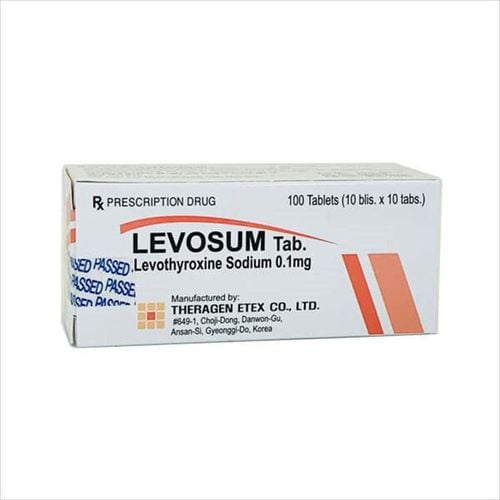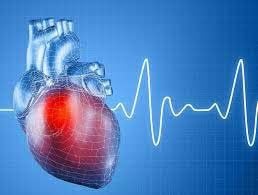This is an automatically translated article.
The article is professionally consulted by Master, Doctor Tong Diu Huong - Radiologist - Department of Diagnostic Imaging - Vinmec Nha Trang International General Hospital. The doctor has more than 10 years of experience in the field of diagnostic imaging.The thyroid gland is a large and especially important endocrine gland in the human body. Thyroid hormone governs many organs in charge of nutritional metabolism, body development, and the cardiovascular system. The patient's quality of life is severely affected.
1. What is Basedow's disease? Graves' disease - also known as Graves - is an autoimmune hyperthyroidism caused by elevated thyroid hormone causing endocrine disturbances in the human body. The disease occurs mainly in women (about 80%) and if the condition is not treated in time but for a long time, it is very dangerous for the cardiovascular system and can lead to death.
2. Manifestations of Graves' disease When having autoimmune hyperthyroidism, the patient will have typical symptoms as follows:
Tachycardia: The heart rate is usually greater than 100 beats per minute or the heart arrhythmia or palpitations. Chest pain makes the patient feel restless, anxious, insecure and even short of breath. Sudden weight loss: Even with a good appetite, the diet is normal, moderation or even increased portion sizes. The patient's body weight is still changing, with severe weight loss for no apparent reason. Poor mobility : Typical symptoms of Graves are problems with muscles, such as fatigue and weakness, causing reduced work and mobility, weakness in the limbs, poor mobility of the limbs adversely affecting the Mobility and labor ability of patients Stress: is a common manifestation of patients with hyperthyroidism. This can include episodes of irritability and agitation without a cause, patients being prone to depression and anxiety, inability to concentrate, trouble sleeping, and impaired quality of life. Muscle and joint pain: Many people with Graves' disease also notice that they have tremors in their hands and fingers, and sweat more. 3. Symptoms of Graves' disease can develop suddenly or gradually every day with current status such as weight loss, fatigue difficult to recognize immediately.

Tachycardia above 100 beats per minute frequently both at rest or during exercise Blood pressure on the systolic side increases, the diastolic side does not increase Heart failure often occurs in people with heart disease from previous Neuromuscular symptoms
Tremor in the extremities, increasing in intensity when emotional or trying to concentrate on work. Tendon reflexes are often increased.
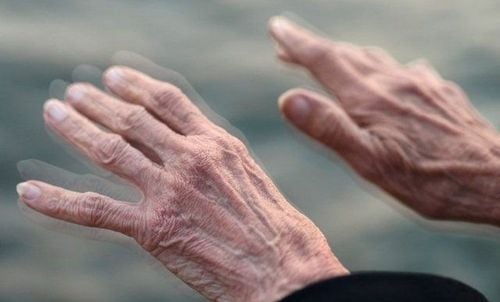
This is a common sign in about 80% of Graves' patients, the goiter is diffuse, soft or firm density, mobile when swallowing.
Endocrine eye disease
Common in about 40 - 60% of Graves' patients, lesions often appear in both eyes, but 10% of cases still have only one side. Typical signs in the eyes are: The eyelids are not closed tightly, the eyelid slits are open, the eyes are protruding or double vision due to paralysis of the ophthalmic muscles. Graves' skin disease
Quite rare in only 2-3% of Graves patients, clinical manifestations can be seen as pre-tibial myxedema, bone lesions, signs of nail shortening, nail bed lengthening.
4. Methods of diagnosis of Graves' disease Thyroid hormone test: FT4 increase, TSH decrease, in addition, patients in early stage only have FT3 increase.
TSH-RAb antibody levels in the body increase Thyroid scan to show the thyroid gland increases radioactive iodine capture or Technitium Thyroid ultrasound : Notice an increase in thyroid size, nodules may appear small sound reduction. Color Doppler can visualize chaotic thyroid structures such as fires during systole and diastole with dilated blood vessels in the thyroid gland.
5. The role of ultrasound in diagnosis of Basedow's disease
Diagnostic ultrasound is a technique to diagnose diseases through images using sound waves, at this time, doctors will use the transducer of the ultrasound machine placed in the patient's neck, then the working ultrasound machine will provides the most detailed images of the characteristics and properties of the thyroid gland and adjacent structures in the patient's neck.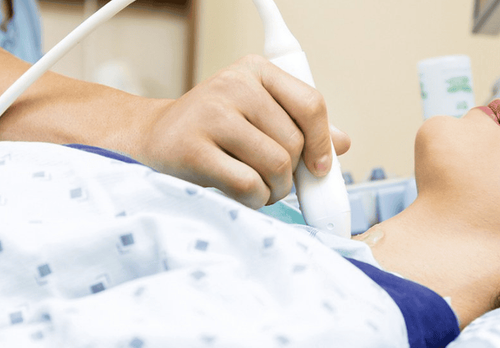
5.1 How to perform goiter ultrasound?
Thyroid ultrasound is done in about 20-30 minutes.During thyroid ultrasound, the patient lies on an examination table and for the best possible image the patient may be asked to lie on his or her side or face down. The doctor will then apply a clear gel to the area of the neck where the patient needs the ultrasound and the transducer. The gel will help the transducer make safe contact with the patient's body and remove gases between the transducer and the skin that can block the sound waves. The probe is placed on the neck area and moved back and forth in the area to be examined.
Ultrasound will provide all the actual images of the patient in real time and the image changes continuously as the transducer moves. The image will be recorded on the screen of the ultrasound machine so that the doctor can observe the characteristics of the thyroid area and diagnose the disease most accurately.
5.2 The role of ultrasound in the diagnosis of Basedow's disease
Goiter ultrasound technique as part of the physical examination process. Ultrasound can provide high-resolution images of other organs, helping your doctor better understand your health.Finding out the focal changes in the image of combined lesions in the thyroid of the patient has been diagnosed based on clinical and quantified thyroid hormones ..., thereby helping to make a good diagnosis disease for the patient.
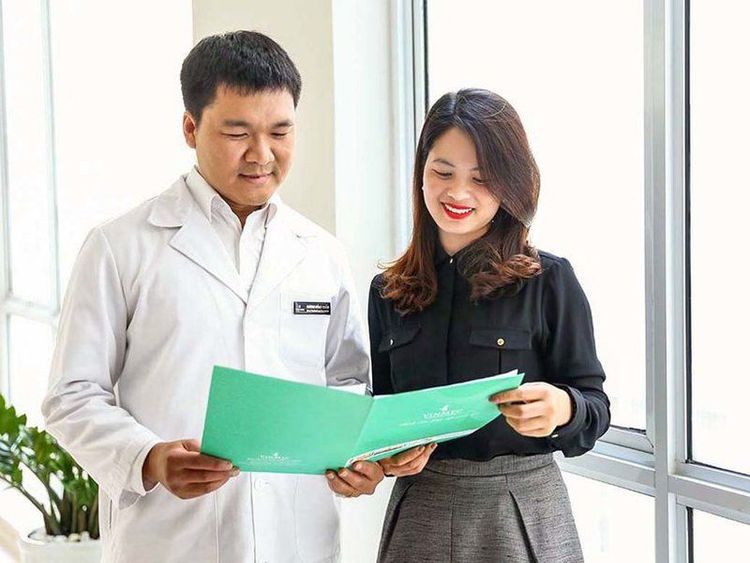
Vinmec International General Hospital is one of the hospitals that not only ensures professional quality with a team of leading medical doctors, modern equipment and technology, but also stands out for its examination and consultation services. comprehensive and professional medical consultation and treatment; civilized, polite, safe and sterile medical examination and treatment space. Customers when choosing to perform tests here can be completely assured of the accuracy of test results.
Please dial HOTLINE for more information or register for an appointment HERE. Download MyVinmec app to make appointments faster and to manage your bookings easily.





